We Tried 15 Ways Of Storing Potatoes And The Winner Outlasted Them All For Months

Potatoes seem like one of those foolproof pantry staples… until you find a mushy one at the bottom of the bag or get hit with that awful sprouted, musty smell. So we put 15 common potato storage methods to the test—from countertop baskets to sealed containers—to find out which one truly keeps your spuds fresh the longest. Here’s how they all stacked up—and the one method that kept our potatoes firm, sprout-free, and totally usable for months.
1. In a Plastic Grocery Bag
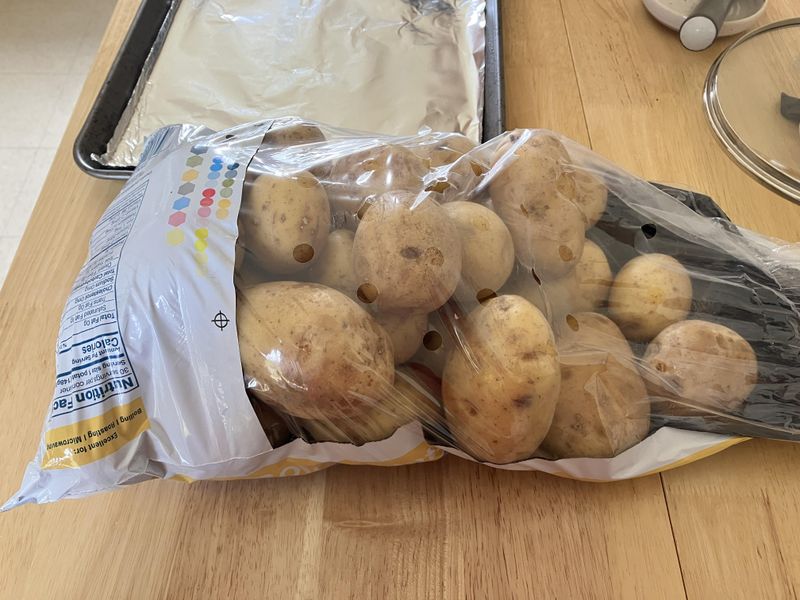
Ever left potatoes in the plastic grocery bag they came in? Trapping moisture and creating a breeding ground for mold, this method is a recipe for disaster. Within days, the potatoes become soft and mushy, with a musty smell that’s hard to ignore.
The trapped humidity encourages rot, making it the least effective storage method we tried. It’s an approach that might seem convenient, but it’s one you’ll want to avoid if you value fresh potatoes. Mold appears rapidly, and there’s no air circulation to help prevent decay.
2. In the Fridge
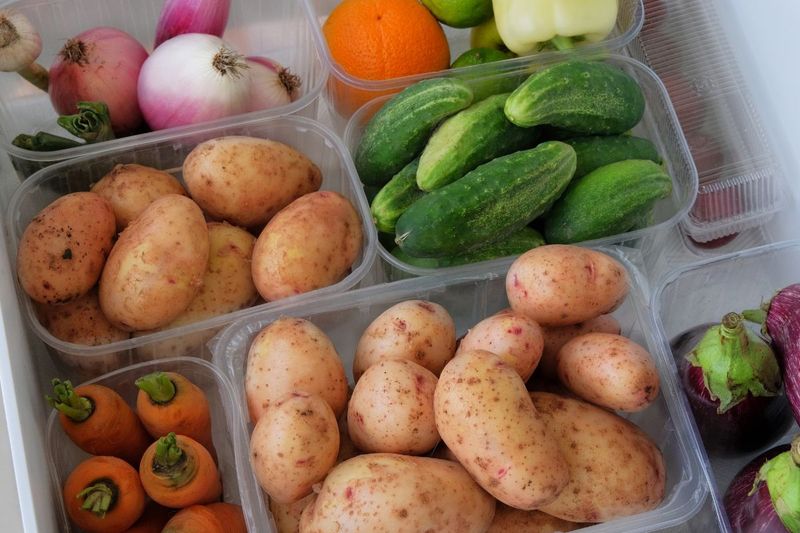
Storing potatoes in the fridge might seem like a good idea, but cold temperatures can mess with the natural starches. This alteration can lead to an oddly sweet and gritty taste that’s not exactly appetizing.
Over time, the texture of the potatoes can become unappealing, as the cold environment disrupts their natural state. Instead of maintaining firmness, they may turn soft and start to spoil. It’s a tempting method but one that ultimately falls short for those seeking long-term freshness.
3. On a Sunny Windowsill
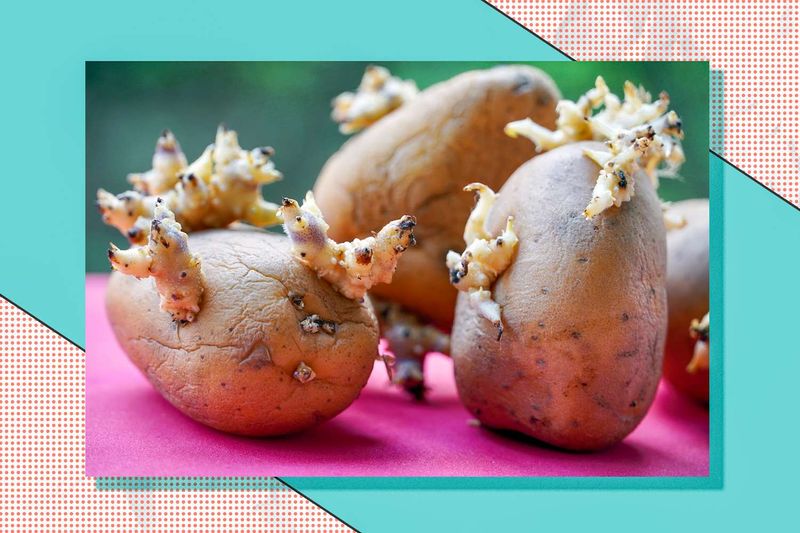
Sunlight might be great for your houseplants, but it’s not ideal for your potatoes. Placing them on a sunny windowsill speeds up sprouting and greening, transforming them from edible to inedible rather quickly.
Photosynthesis kicks in, and the potatoes start to develop green patches that are best avoided. This method accelerates spoilage, making it a poor choice for those looking to extend the life of their spuds. The increased exposure to light is a critical factor in their rapid decline.
4. In a Sealed Plastic Container
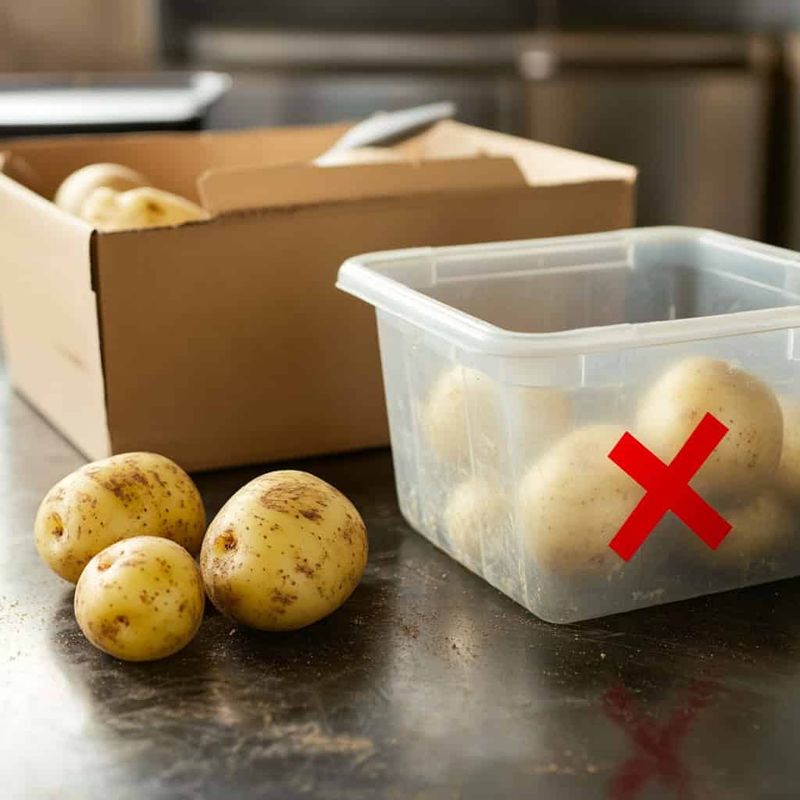
Potatoes might seem safe in a sealed plastic container, but this method actually hastens their spoilage. With no airflow, humidity builds up quickly, creating an environment ripe for mold growth.
The lack of ventilation causes the potatoes to deteriorate faster, making this approach less than ideal. While it might be visually appealing, the container traps moisture, which can lead to musty smells and soft, unusable potatoes in no time.
5. Next to Onions
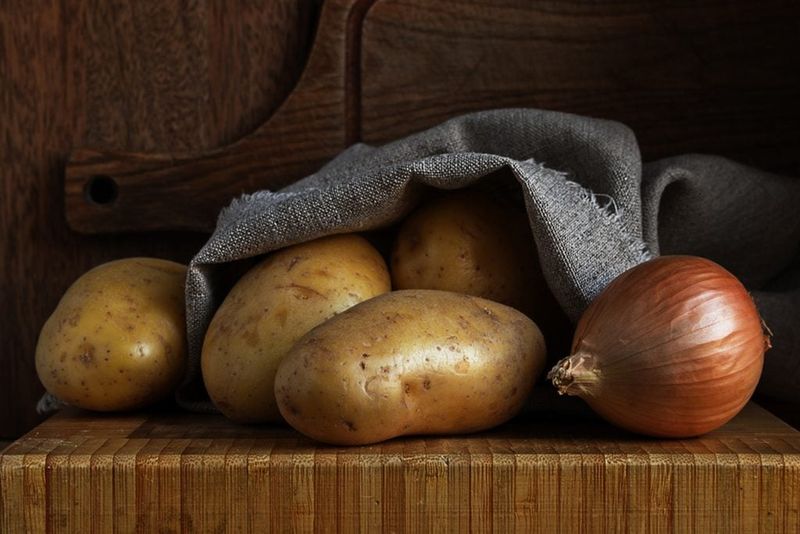
Placing potatoes next to onions might seem like a space-saving move, but it’s anything but helpful. Onions release gases that not only speed up potato spoilage but also lead to quicker sprouting.
The close proximity accelerates decomposition, making this method more of a hindrance than a help. Though convenient, the interaction between potatoes and onions is best avoided if you want to keep your potatoes fresh and free from unwanted growth.
6. Open Bowl on the Counter
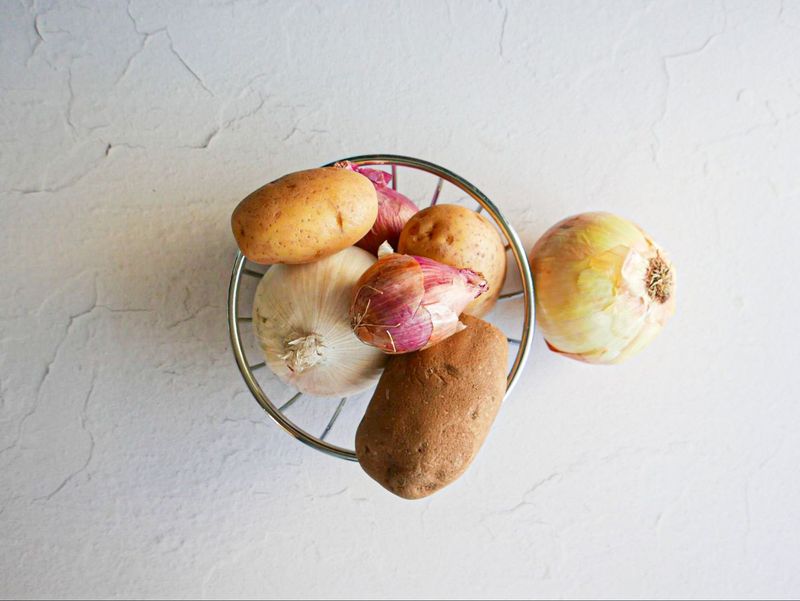
An open bowl on the counter provides easy access but leaves potatoes vulnerable to light exposure. This method is acceptable for short-term storage, yet the increased light can lead to unsightly green patches and rapid sprouting.
While it might look decorative, the constant exposure hastens spoilage, especially in well-lit kitchens. It’s a method that works in the short run but fails to keep potatoes fresh for extended periods.
7. In a Cloth Bag Near the Stove
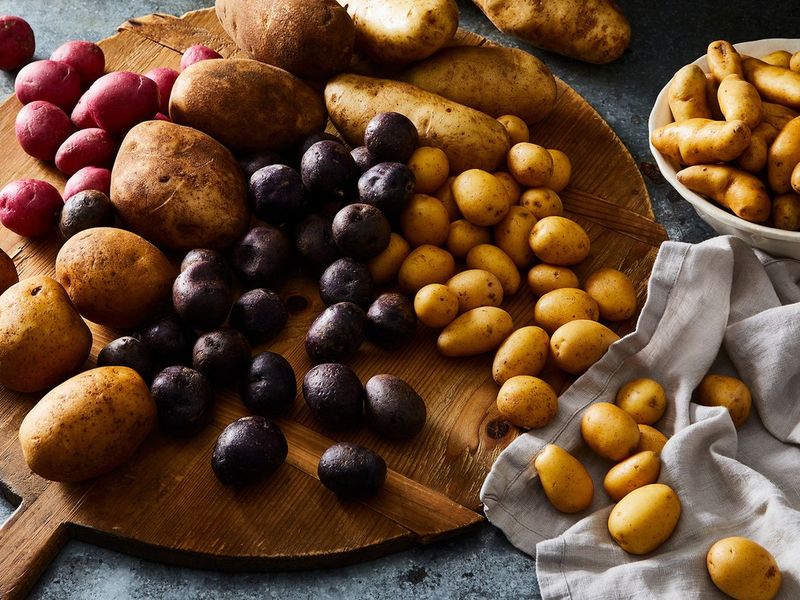
Using a cloth bag near the stove might seem practical, but the heat from nearby cooking shortens potato shelf life. The breathable material does allow some air circulation, yet the warmth accelerates softening and sprouting.
Within a matter of weeks, potatoes stored this way begin to wilt and lose their firmness. It’s a method that offers convenience but falls short for those aiming for long-term freshness. Avoiding excessive heat is key to keeping your potatoes in prime condition.
8. In a Cardboard Box in a Warm Pantry
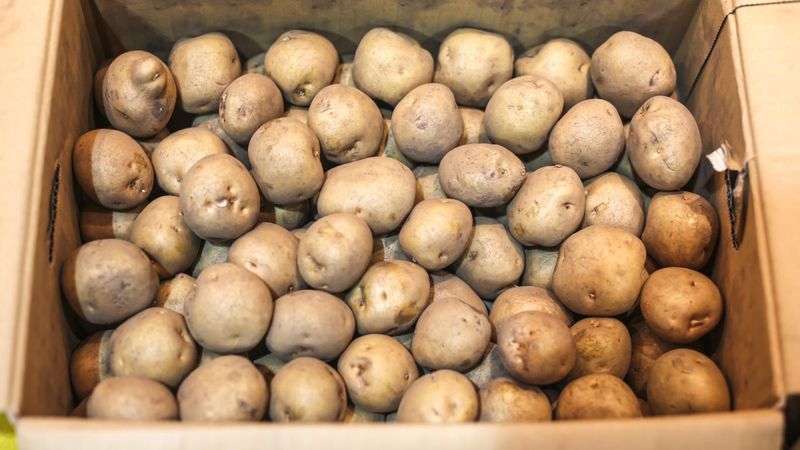
Storing potatoes in a cardboard box within a warm pantry can work for a short time, but the heat eventually catches up. The lack of proper air circulation leads to quick softening and spoilage.
Within a couple of weeks, potatoes stored this way begin to show signs of decay, with soft spots appearing. Though better than some methods, it doesn’t compare to cooler, better-ventilated options. Temperature plays a crucial role in preserving potato freshness.
9. In a Vegetable Drawer in the Fridge
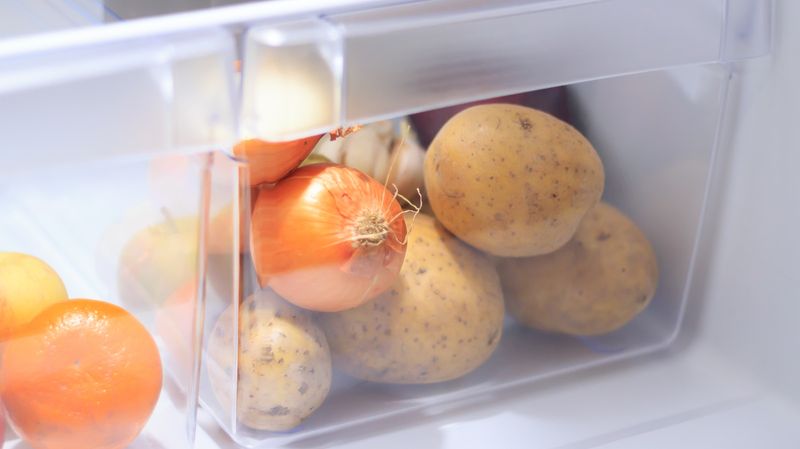
Using a vegetable drawer in the fridge offers slightly better conditions than open fridge storage, yet it’s still not ideal. The cold environment disrupts the starch, affecting texture and taste over time.
While it may extend shelf life marginally, the potatoes lose their appealing texture, turning gritty and slightly sweet. It’s a step up from other fridge methods but still lacks the optimal conditions for long-term storage.
10. In a Wicker Basket Under the Sink

Out of sight yet too close to moisture, storing potatoes under the sink in a wicker basket invites humidity. This method leads to soft spots developing within weeks, as the moist environment promotes rapid spoilage.
Though hidden from view, the lack of proper ventilation and the high humidity levels contribute to a quicker decline in potato quality. It’s a method that’s convenient but ultimately flawed for long-term storage. Protecting potatoes from excess moisture is essential.
11. Paper Bag in a Dark Cabinet
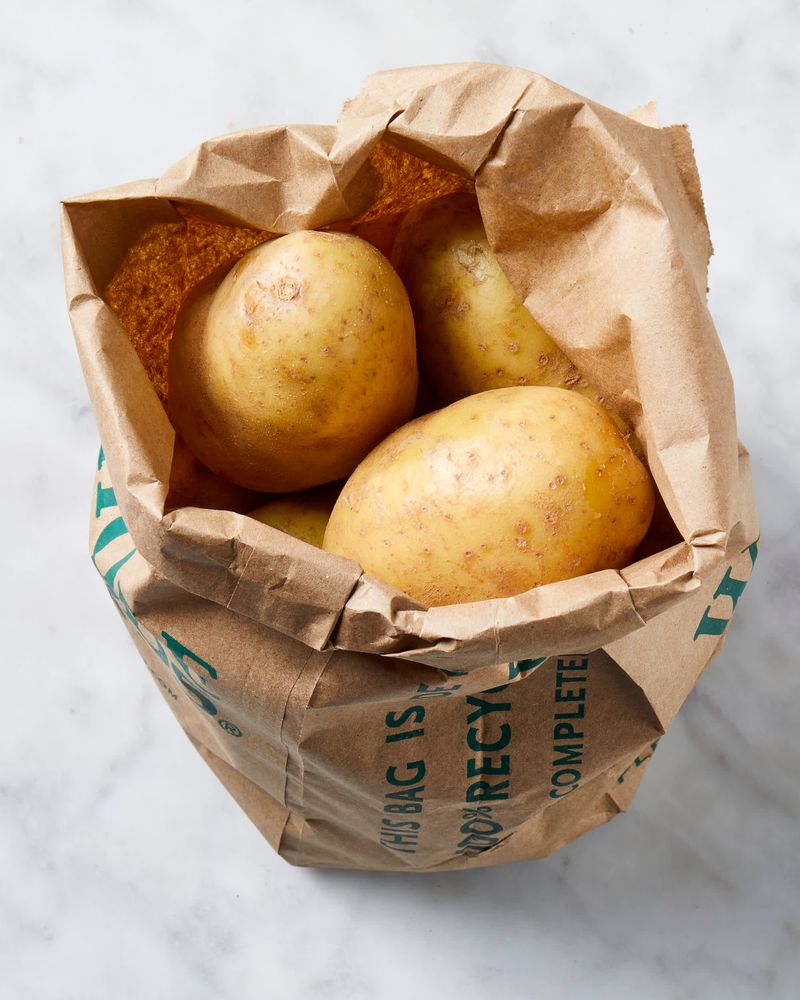
A paper bag in a dark cabinet is a simple yet effective method for storing potatoes. The breathable material allows air circulation while the darkness prevents sprouting, keeping potatoes fresh for over three weeks.
This method offers the right balance of ventilation and light protection, making it a reliable choice for medium-term storage. Potatoes remain firm and appealing, demonstrating the benefits of controlled environments. It’s a method that combines simplicity with effectiveness.
12. Hanging Mesh Produce Bag in a Cool Pantry
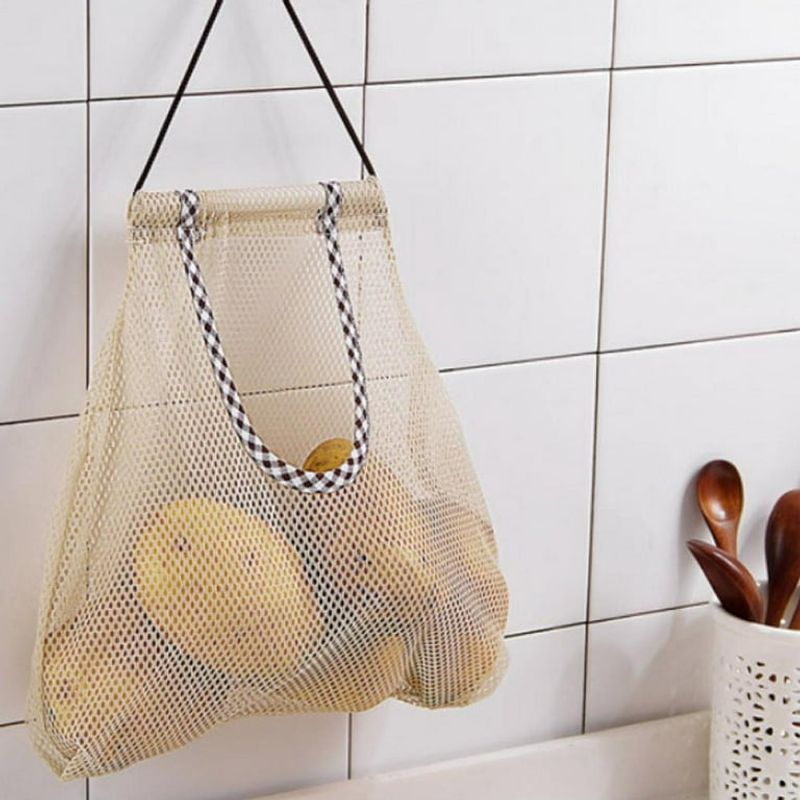
Using a hanging mesh produce bag in a cool pantry is a smart storage solution. The mesh design ensures optimal airflow, preventing moisture buildup and prolonging freshness.
Potatoes stored this way remain firm for nearly a month, thanks to the cool environment and excellent ventilation. This method not only saves counter space but also maintains potato quality over time. It’s a practical choice for those seeking both efficiency and effectiveness in storage.
13. Cardboard Box in a Cool, Dark Basement
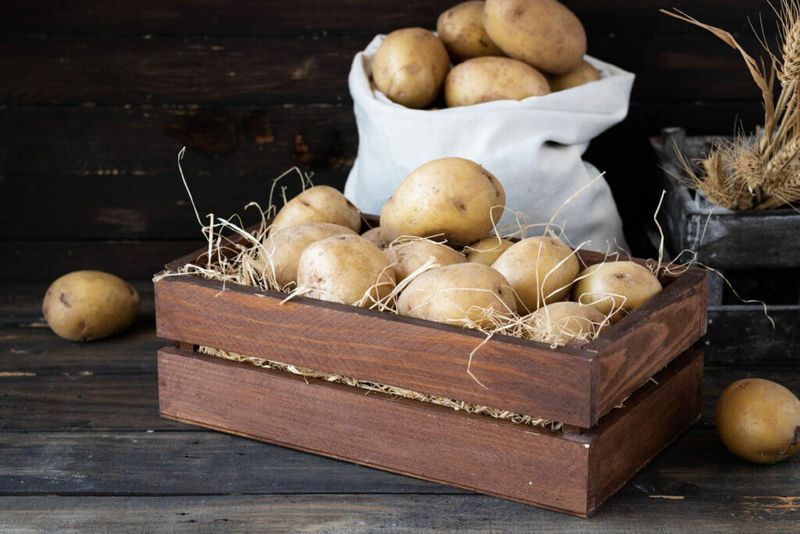
A cool, dark basement is an ideal location for storing potatoes in a cardboard box. The consistent cool temperatures and lack of light contribute to a longer shelf life, maintaining potato firmness for up to six weeks.
This method takes advantage of natural conditions, offering a convenient and effective solution for those with basement space. Potatoes stored this way show minimal signs of spoilage and remain sprout-free. It’s a method that aligns well with traditional storage practices.
14. Root Cellar-Style Bin
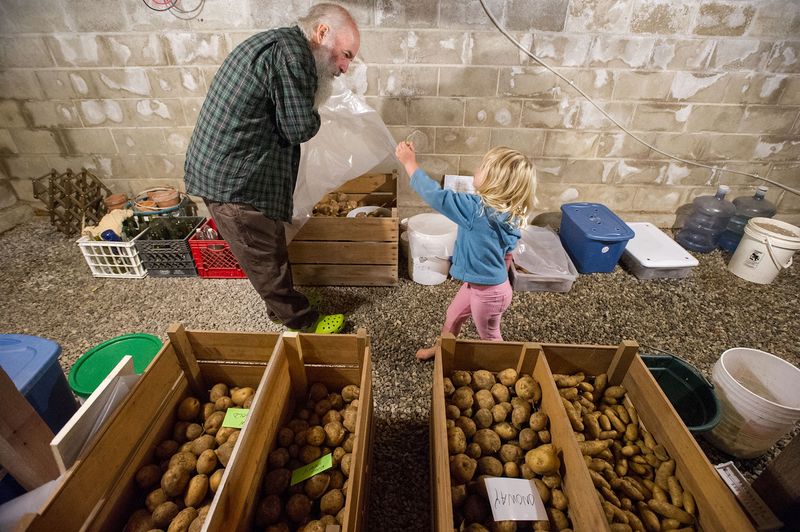
For those fortunate enough to have a root cellar-style bin, storing potatoes becomes an easy task. Mimicking the ideal conditions of coolness, darkness, and slight humidity, this method keeps potatoes fresh for nearly two months.
The slight humidity control ensures potatoes stay firm without drying out, while the darkness prevents sprouting. It’s a method that leverages traditional wisdom, offering a reliable way to store large quantities effectively. Root cellar-style bins provide the perfect balance for long-term storage.
15. Burlap Sack in a Cool, Dark, Well-Ventilated Area

The ultimate method for storing potatoes, a burlap sack in a cool, dark, well-ventilated area ensures maximum freshness. The breathable fabric allows air circulation, preventing rot and mold.
Potatoes stored this way remain firm and sprout-free for over three months, with no unpleasant odors. This method leverages natural materials and optimal conditions, making it the definitive choice for long-term storage. A basement or garage corner works perfectly, providing everything needed for successful preservation.
